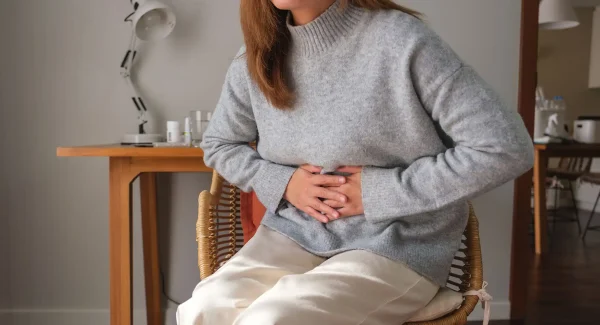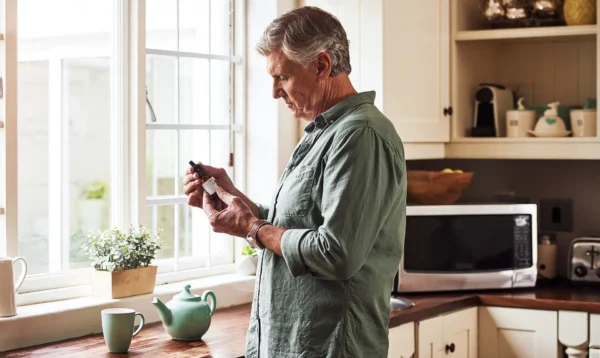Endometriosis Awareness Month is a time to shed light on a condition affecting millions worldwide, many of whom remain undiagnosed or misunderstood. Throughout March we’re dedicated to raising awareness, supporting those affected, and advocating for better care and understanding of endometriosis.
At Curaleaf Clinic, we specialise in supporting those assigned female at birth with pain conditions, such as endometriosis, that haven’t responded to first-line therapies. From 2021 to 2024 we had a 524% rise in endometriosis patients.
What is Endometriosis
Endometriosis is a complex medical condition in which the tissue that lines the uterus grows outside the uterus, often within the pelvis. This tissue reacts to hormonal changes causing inflammation, pain, and scarring, particularly during menstruation. It commonly affects those between ages 25 and 40 but can take years to diagnose – often 7.5 years on average. By spreading awareness, we can help more people recognise endometriosis symptoms and access timely care.
To address these delays, NICE and RCOG have recently updated their guidance to improve early diagnosis and streamline care pathways. Learn more about these changes in our blog on the NICE guidance update.
Facts & Figures
According to Endometriosis UK, these are the latest statistics on endometriosis:
- In the UK, 1 in 10 of those assigned female at birth and of reproductive age are affected by endometriosis.
- It is estimated that 176 million people globally have endometriosis.
- The prevalence of endometriosis in women with infertility is estimated to be between 30-50%.
- On average it takes 7.5 years from onset of symptoms before a diagnosis is made.
- The cause of endometriosis is still unknown, but the most common theory is that cells from the womb lining migrate out of the womb via the fallopian tubes during a period.
- There are four different types of endometriosis and it’s possible to have more than one type.
Diagnosis can be delayed due to the subtlety of symptoms and overlap with other conditions, often leaving patients without proper pain management.
Common Symptoms and Challenges of Endometriosis
Endometriosis can feel like intense menstrual cramps extending to the back and legs, with some people experiencing symptoms unrelated to menstruation, like pain during intercourse, chronic fatigue, and fertility challenges. As one of our patients, Andie, described, “it’s an evil condition that brings a raft of issues, including excruciating pain that makes everyday life feel impossible.” Managing these symptoms can be emotionally and physically exhausting, often taking a toll on mental health as well.
Candice, another Curaleaf Clinic patient, told The Sunday Times, “the hardest thing for me about endometriosis is with every surgery your loved ones want you to get better and you want to get better. As you recover from the operation you get better and then there will be a red flag symptom, such as a urinary tract infection or nausea. It starts to come back subtly. I have never managed to get past nine months without feeling I could do with another surgery.”
The symptoms of endometriosis can vary from person to person, but the most common signs include:
Pelvic Pain
People with endometriosis often experience intense pain before and during menstruation, which may extend to the lower back and legs.
Painful Intercourse
Sexual intimacy may become painful due to the presence of endometrial tissue outside the uterus. This pain is commonly felt as a deep internal pain, but other types of pain may also be present.
Infertility
Endometriosis can significantly impact fertility, making it difficult for some partners to conceive.
Fatigue & Emotional Distress
Chronic pain and associated challenges can contribute to fatigue, anxiety, and depression.
How Do You Relieve Endometriosis Pain?
While there is currently no cure for endometriosis, various treatment approaches exist to manage symptoms and improve quality of life. Traditional treatment options may include:
- Pain Medication: Over-the-counter pain relievers or prescription medication may help manage pain during menstruation.
- Hormonal Therapy: Contraceptive pills, hormone patches, or other hormone-based treatments can regulate the menstrual cycle and alleviate symptoms.
- Surgery: In more severe cases, laparoscopic surgery may be necessary to remove endometrial tissue. Surgery is also used in the diagnosis of endometriosis.
When symptoms persist despite standard treatments, or when standard treatments are unsuitable due to side effects, medical cannabis may be considered.
Our Commitment to Endometriosis Action & Awareness
At Curaleaf Clinic, we’re committed to raising awareness about the gender pain gap and advocating for women’s health through holistic and compassionate care. We believe that education is key – both for patients and healthcare professionals. Chronic pain is frequently under-recognised in women’s health, often resulting in delayed diagnoses and insufficient pain management1.
Addressing inequalities in healthcare starts with understanding, and we’re dedicated to supporting research, improving awareness and ensuring better outcomes for those living with endometriosis. You can watch our short film on the gender pain gap to learn more.
We recognise the unique challenges women face in managing chronic pain. Our expertise is in providing specialist, compassionate medical cannabis care to eligible patients.
Meet the Expert
Dr Wendy Holden, consultant rheumatologist at Curaleaf Clinic, offers her expertise on the complexities of endometriosis, from its symptoms to the unique challenges in the body, most typically elsewhere in the pelvis. These cells react to changing hormones during the menstrual cycle, grow thicker in size as oestrogen levels peak and then break away and start to bleed. This blood is slowly reabsorbed by the body but the process can cause inflammation, pain, and the formation of scar tissue.
“Many women with endometriosis don’t feel “heard” – it can be a difficult condition to diagnose as its symptoms can be similar to other conditions and a definitive diagnosis cannot be made without keyhole surgery.”
Dr Holden also highlights the interconnection between chronic pain, sleep, and mental health for those with endometriosis: “Pain, sleep, and anxiety are closely interlinked for many patients with endometriosis and one of the keys to managing the condition is to break this negative cycle. Chronic pain interrupts sleep, lack of sleep means it’s more difficult to cope with pain during the day, focusing on everyday tasks is challenging and it’s harder to introduce positive lifestyle changes such as exercise – this in turn can result in poor mental health such as anxiety and depression. This can subsequently heighten the severity and impact of the pain.”
Watch Dr Holden on Endometriosis for Curaleaf Clinic on YouTube
For those whose symptoms persist despite conventional therapies, medical cannabis may offer an alternative. Dr Holden explains: “As our understanding of pain and its relationship to medical cannabis grows, we want to ensure more patients know that medical cannabis is an option for their pain. At Curaleaf Clinic, we ensure that patients are evaluated carefully, and we use a multi-disciplinary approach to determine whether medical cannabis could benefit their unique circumstances. This includes a strict triaging process and a multi-disciplinary team deciding every potential new patient prescription. As such, our patients can rest assured their wellbeing is at the centre of everything we do.”
Curaleaf Clinic
At Curaleaf Clinic, we are committed to supporting individuals living with endometriosis. Medical cannabis won’t be right for everyone, but for those with unmet needs it’s another option to explore, which can be a powerful thing. If you or someone you know is struggling to manage the symptoms of endometriosis visit our Getting Started page to learn more.
1. Implicit bias in healthcare professional: a systematic review, BMC Med Ethics, https://pmc.ncbi.nlm.nih.gov/articles/PMC5333436/








